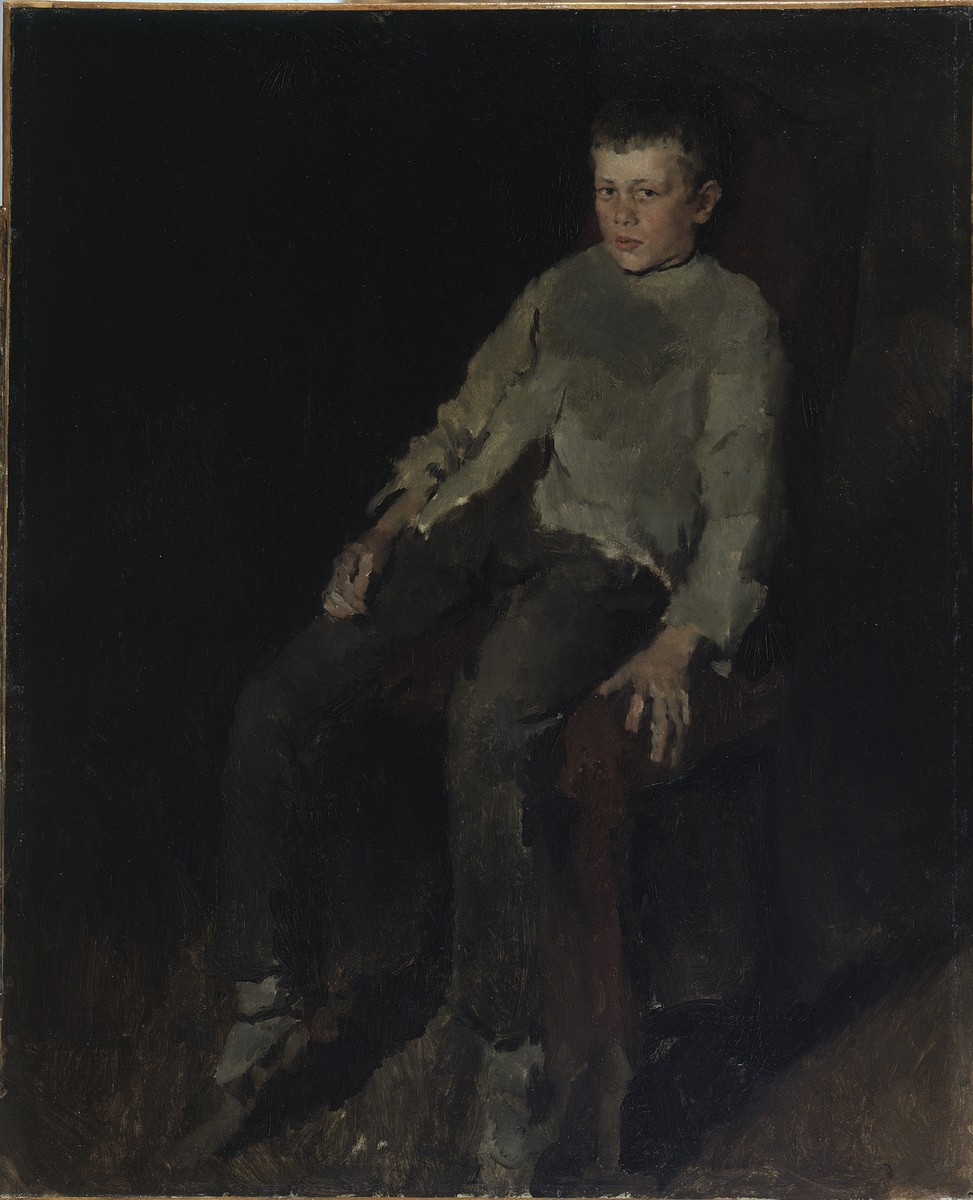Abstract
Peasant Boy dates from a period in
Wilhelm Leibl’s career that precedes his attainment of a style easily
identifiable as realism. In 1869, Leibl had traveled to Paris, where he
came into contact with Gustave Courbet (and probably also Édouard Manet)
and admired the Frans Hals paintings that he saw in the Louvre. In 1870,
Leibl returned to Munich. By 1873, he had retreated to the Bavarian
countryside, which offered the peasant subjects that dominated his art
for the next two decades. The subject of this painting—not to mention
the pose—is unspectacular. A seemingly shy boy slouches on a chair that
is too high and too deep for him: indeed, he hangs as much as he sits.
This work impresses the viewer not by its technical virtuosity but
rather by its simple beauty—its rendering of a peasant model, awkward
and vulnerable, in complex but unadorned hues of beige and brown. The
hues are not contained by strict contours: instead, at least from the
boy’s waist downward, they flow into the background, leaving only
brushstrokes to define the form. In this way,
Peasant Boy indulges a pure,
painterly impulse, and thereby anticipates certain aspects of German
Impressionism. Likewise, Leibl’s work gestures towards Impressionism by
eschewing explicit social commentary and focusing instead on the
external appearance of people and objects. As the artist once wrote, “I
paint human beings as they are, so the soul is there in any case.”
(Françoise Forster-Hahn et al., Spirit of
an Age: Nineteenth-Century Paintings from the Nationalgalerie,
Berlin. London: National Gallery Company, 2001, p. 156.)
